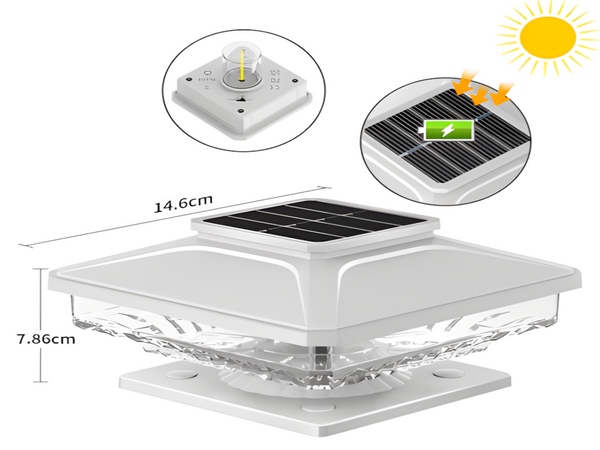
A product needs to undergo the following inspections before leaving the factory.
(1) Check if the streetlight-related certifications are complete.

(2) Quick assessment of the quality of LED streetlights.
LED streetlights are primarily composed of light sources, power supplies, and heat sinks. The quality of materials and manufacturing processes directly affects the price of the streetlight. Testing from the material perspective can quickly evaluate the raw materials and processes of the LED streetlight to ascertain its quality.
1. Testing the optical and electrical performance of LED streetlights.
The optical and electrical performance tests are crucial for evaluating and reflecting the quality of LED streetlights and for checking whether there is any false labeling.
Testing contents include: total luminous flux, luminous efficiency, luminous intensity distribution, correlated color temperature (CCT), color rendering index (CRI), chromaticity coordinates, input AC or DC voltage, input AC or DC current, input power (DC or AC), input voltage frequency, and power factor.
2. Assessment of the core light source quality of LED streetlights.
The LED light source bulb testing contents include:
Evaluation of lens manufacturing processes, types of packaging adhesives, presence of contaminants, bubbles, and tightness assessment.
Evaluation of the phosphor coating process, particle size distribution, composition, and presence of agglomeration or settling phenomena.
Evaluation of chip manufacturing processes, microscopic structure measurement of chip patterns, defect detection, identification of contaminants, presence of leakage, and damage assessment.
Evaluation of wire bonding processes, observation of first and second solder morphology, arc height measurement, diameter measurement, and identification of wire composition.
Evaluation of die bonding processes, presence of voids, layer separation, composition, and thickness of the die bonding layer.

Evaluation of the coating process for brackets, composition of brackets, coating composition, coating thickness, and the airtightness of brackets.
3. Assessment of the heat dissipation performance of LED streetlights.
As a new type of energy-saving streetlight, LED streetlights convert only 30-40% of electrical energy into light while converting the rest into heat. Moreover, the lifespan and quality of the LED light source are closely related to temperature, with the temperature of the bulb, outer casing, and heat sink affecting the uniformity and lifespan of the LED illumination.
Examination of the heat dissipation of LED streetlights includes: assessment of heat dissipation design; whether component temperatures are too high after reaching thermal equilibrium; and testing the materials used for heat dissipation to ensure they are selected for high specific heat and high thermal conductivity.
4. Determining whether LED streetlights contain harmful substances to the light source.
LED light sources are sensitive to sulfur, with over 50% of failures caused by sulfide bromination of the silver-plated coating on the LED bulb. Sulfide bromination can cause blackening of the functional area, a gradual decrease in luminous flux, and noticeable color temperature shifts. During use, leakage can easily occur. In severe cases, the silver layer may be completely corroded, exposing the copper layer, leading to bulb detachment and dead lights. There are over fifty raw materials inside LED streetlights, which may also contain sulfur, chlorine, and bromine. In sealed, high-temperature environments, these elements can volatilize into gases and corrode the LED light source. Testing for a sulfur discharge report is crucial to ensuring the stable quality of LED streetlights.
5. Quality verification of LED power supplies.
The function of the LED driver power supply is to convert AC mains electricity into suitable DC for LEDs. When selecting and designing LED driver power supplies, considerations should include reliability, efficiency, power factor, driving methods, surge protection, and temperature negative feedback protection functions. The LED driver power supply for outdoor streetlights should also consider waterproof and moisture-proof features, requiring the casing to be UV-resistant and resistant to aging, ensuring the lifespan of the driver matches that of the LED. Examination contents include: output parameters (voltage, current); whether the driver maintains constant current output characteristics, whether it is purely constant current or a constant current and constant voltage driving method; whether it has individual overcurrent protection, short-circuit protection, and open-circuit protection; leakage detection of the power supply: while powered, the casing should not exhibit any live conditions; ripple voltage detection: no ripple voltage is acceptable, and when ripple voltage is present, the smaller the peak, the better; flicker assessment: LED streetlights should not flicker upon lighting up; startup output voltage/current: at startup, the power supply output should not exhibit large voltage/current; and compliance of the power supply surge with relevant standards, such as IEC61000-4-5.
(3) Chip source identification.
The tested LED chip database stores information on numerous chips from domestic and international manufacturers, with data that is accurate and updated quickly. Through retrieval and matching, it is possible to confirm chip models and manufacturers, which helps streetlight manufacturers enhance quality control and efficiency.
(4) Visual and structural inspection of the streetlight.
Tender documents usually stipulate the materials for the appearance of streetlights, which will be checked in detail.
Visual inspection: The color of the paint should be uniform, with no pores, cracks, or impurities. The coating must strongly adhere to the base material, and all components of the LED streetlight should have smooth, flat surfaces with no scratches, cracks, or deformation defects.
Size inspection: The dimensions should comply with design specifications.
Material inspection: The materials used in the streetlight’s components and their structural design should adhere to the design requirements.
Assembly inspection: All fastening screws on the surface of the streetlight should be tightened, with edges free of burrs and sharp edges, and connections should be secure without looseness.
(5) Waterproof testing.
LED streetlights, designed for outdoor illumination, are installed several meters to more than ten meters above ground, which makes replacement and maintenance very difficult. Therefore, good waterproof and dustproof properties are crucial. Thus, the waterproof and dustproof rating of the streetlight is particularly important.
Bitpott is a high-tech company specializing in the production of outdoor LED streetlights. The company has introduced advanced production equipment and processes from Europe and America, focusing on the research and development of smart control systems for outdoor lighting, providing urban and rural streetlight project solutions, and receiving high praise from customers.



